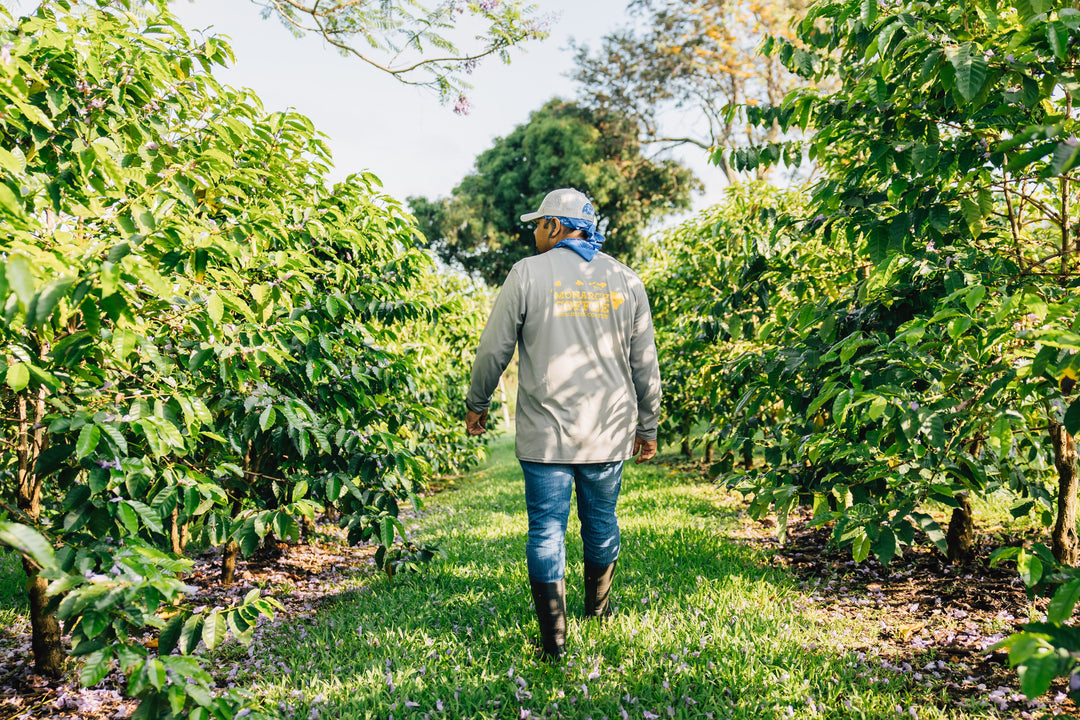Ethiopia Travel Report 2019
We arrived in Ethiopia in February with hopes of strengthening our bond with the amazing characters here that we buy coffees from. Ethiopia is, despite its minute distance from Kenya, of a completely different nature than its southern neighbor. People are warm, and cultural roots run deep in this unconquered African nation of over 80 different ethnic groups. But this diversity also means many ancient tensions are at play, resistant to uniting the Ethiopian peoples under one cultural identity. It’s a complicated nation where cultural barriers are persistent; however, the effect coffee has on the entire population is very much a unifying part of daily life.
Landing in a city situated at 2,400 masl (or almost 8,000 feet!) sounds daunting, but the weather in Addis Ababa is enjoyably temperate. We quickly set out to Dila, an isolated city in the Southern Nations which has only a small strip of asphalt and is mostly dirt and adobe. But in the face of the apparent poverty in these regions, smiles are rampant and when a foreigner, or ‘faranji,’ visits he is going to be the center of interest for locals.

Retreating with Desta into his small processing facility, we saw a great example of Ethiopian tradition: alongside the drying beds that Africa is known for were the fermentation tanks where Desta lets his coffee sit in water to ferment for almost 48 hours (and sometimes longer). After the mucilage is no longer stuck to the beans, they are washed and rinsed again, before being set out to dry.

The large misconception I often hear about Ethiopian coffee is that it is dried for twice as long as typical. Considering most coffee in Yirga Chefe is produced and processed from 6,000 feet upwards, it is easy to imagine a longer drying time, but with the strong sun at these latitudes and the wind that circulates through these hills, it is common for washed coffees to dry in just one to two weeks.
A factor in the drying time is that 75% of Ethiopia’s coffee is processed naturally or without the use of water. The pulp is left on the cherry and this allows enough moisture for the coffee to ferment. This “Natural Process” increases the drying time under the sun, up to 25 days in certain conditions.
After watching the drying and processing with Desta, I set out to observe an Ethiopian coffee farm for the first time. Unlike most countries, it is common in Ethiopia for coffee plants to reseed themselves and in relatively orderly separation from tree to tree.
There is little pruning practice other than collar pruning older plants that have started to slow their production, and fertilization is typically organic, with farmers setting out a mixture of pulp, manure, and other organic matter that falls from the ample shade. Yet even with these low impact practices, the production per tree is astonishingly high. So many things about Ethiopian coffee feel right, possibly stemming from the fact that as the birthplace of coffee, the countryside has forged an ancient bond between the people and this beautiful expression of nature.
Once Yirga Chefe appeared in the horizon, we were eating lunch and thinking about our next producer: Adisu Kidane. Adisu is a younger 40-year-old family man, well-groomed and surrounded by a warm aura. Once on his property he showed us where he laid the drying beds (he only produces naturals) and took us into a small cabin where we met his mother, wife, and newborn son.

Adisu’s family helped prepare coffee in the traditional Ethiopian ceremony, where the coffee is roasted on a metal pan over burning wood, until dark, and then mashed in a small wooden cache until powdery. The coffee powder is then heated in water until boiling, at which point it is left to cool a bit and poured into cups. Expecting to find the seemingly burnt coffee to have some carbon flavors, I was taken aback when the intense flavor of berries invaded my mouth and I quickly finished the cup hoping I’d be served more.
Later we walked around the farm and it was clear that the varietals were different. I learned about the varietal system that the government has helped create with mass selections of reliable varieties. Labeled names such as 74158, and 74110, a number system which indicates the year and where in chronological order these varietals were selected. This system is based upon the continuous experimentation of new varietals and their mutations across Ethiopia, on behalf of the Federal institution. Since all of Adisu’s coffee is dried three weeks or longer, it is one of our most stable coffees.
One concern is the lack of consistency in the picking. We asked Adisu why there were issues with harvesting despite having 20 people in charge of the drying area, and he recounted a tale common in this extent of Ethiopia. Between the two districts called ‘Gedeo’ and ‘Oromia’ there are various disputes due to ethnic differences which leads to many displaced people who have left their homes in order to escapes threats of extreme violence. This creates hasty picking in order to avoid theft and violence. These issues stem from deep cultural boundaries that have been drawn, erased and redrawn many times over the centuries and complicates the already delicate work of negotiating with producers and visiting the co-operatives.

Before visiting the co-operatives, we headed to visit our last individual producer: Bedhatu Jibicho. At over 80 years old, Jibicho has worked her land for many years, until passing it on to her three children (one who is deceased) who have managed it for the last few years.
Near Banko Gotiti we were led down to the farm to meet Tisfay, one of Bedhatu’s sons. Tisfay walked us around his 30+ hectare plot full of ancestral shade trees and the most diverse varietal landscape I have seen. Under every shade tree there was a different varietal growing, replicating itself and feeding itself from the abundant organic matter on the ground. Having over 400 workers present both in picking and in the processing facility, Tisfay’s farm is one of the largest individual job sources we have encountered in this part of Ethiopia that is not a multi-washing station, private exporter or a co-operative. After visiting Tisfay, we went to go visit a few the cooperatives in charge of producing some of our favorite coffees.

Halo Bariti and Banko Dadhatu are two amazing cooperatives sitting between Banko and the Worka area in Gedeo, both with about 900 participating members that produce some of the most delicious lots we’ve tried in the past few years.
Both cooperatives hire 300 people per year to pick out defects from the beds, and help maintain a certain standard of work ethic throughout the area. A majority of these members feed their family and pay for school by farming small 0.5-7-hectare plots and in some cases, Ethiopian co-operatives pre-finance a farm’s production.
When member farmers deliver their cherries to the co-operative, they are paid the majority of their income, with a slight premium per pound if you produce more volume. This begins to underscore the difficulties of sourcing coffee in a country where quality is not yet valued, and where the average farmer has only the slightest hint of what is being paid for a pound of their green coffee in developed countries. By educating our farming partners with our transparent and Fair For All purchasing practices, we are helping farmers understand the value of their coffee and how it can be even more valuable if the quality improves. It’s a win for them and a win for people who love delicious coffee.

There is one law that Ethiopia stands by; only lower grade coffees can be sold locally, and all high-density grades of coffee can be exported. This helps bolster the economy, yet is creating deeper divisions between the Ethiopian and the European or American consumer. This detachment further strengthens Ethiopia’s issues of corruption, decentralized power struggles, and the failed efforts to unify the country under one identity.
We arrived back in Addis with few clean clothes, and a week full of cupping ahead.
Marco Ariz
Green Coffee Relationship Manager




